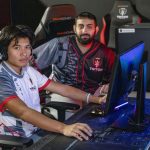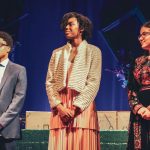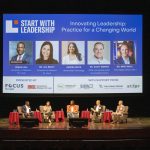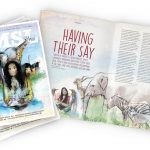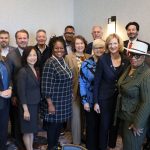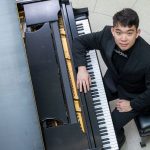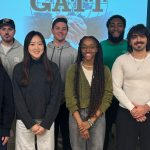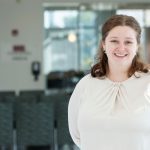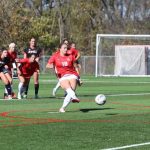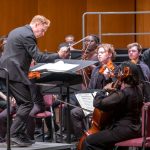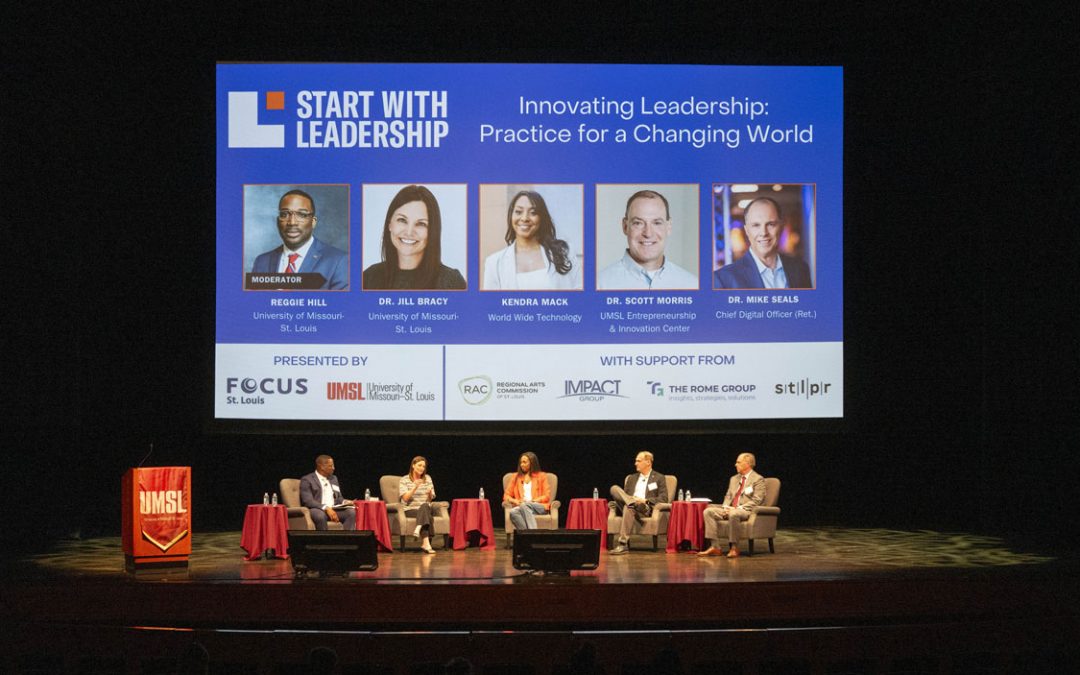
Awards from the National Science Foundation and from NASA Missouri Space Grant Consortium will help UMSL Professor of Physics and Astronomy Erika Gibb continue her work observing comet composition while creating opportunities for students. (Photo by August Jennewein)
For her research on comets, Erika Gibb spends a good amount of time peering into space with powerful telescopes such as those at the NASA Infrared Telescope Facility.
That makes the professor and chair of the Department of Physics and Astronomy at the University of Missouri–St. Louis a natural candidate for a question that’s on the minds of U.S. senators, military officials, Joe Rogan and even Lil Nas X:
Are aliens among us?
“Extraordinary claims require extraordinary evidence,” Gibb said when asked about recent news of supposed extraterrestrial vehicle fragments. “I think if you’re going to claim that, you need some pretty solid proof. Now, I do think that there’s a good chance that there’s life elsewhere in the universe. Probably mostly bacterial.”
Though spaceships aren’t Gibb’s specialty, her work with comets does seek to answer questions about how life on Earth formed. That research just got a little bit smoother thanks to a National Science Foundation grant awarded in July. Along with another recent award – from the NASA Missouri Space Grant Consortium associate award program – the NSF grant will help support Gibb’s passions in both research and creating opportunities for her students.
Gibb first became interested in comets while studying ices in dust clouds in space during graduate school at the Rensselaer Polytechnic Institute in New York. Those dust and ice clouds collapse to form stars, and Gibb wanted to know how much chemistry was involved in that process. She reached out to NASA planetary scientist Michael Mumma, interested in comparing their compositions to that of comets.
Mumma became Gibb’s postdoctoral mentor, and she completed a postdoctoral position at NASA Goddard Space Flight Center then went to the University of Notre Dame to study protoplanetary disks, the origins of life and how molecules are distributed in young solar systems.
“But I knew I always wanted to be a professor,” Gibb said. “I didn’t want to just do research. I want to help make students scientifically literate, but I also really like mentoring students. I really like having students in the lab.
“I like seeing their excitement in doing research. In the classroom, I like seeing when the light bulb goes off, and they suddenly get something or something they’ve been working on suddenly makes sense. I love seeing my students go off and go to grad school or get jobs.”
So when a position in infrared spectroscopy opened at UMSL, Gibb jumped at the opportunity. In the 15 years since, she’s focused on studying the composition of comets using high-resolution near-infrared spectroscopy, with her recent NSF grant the latest in a long string of funding that stretches back 30 years, before Gibb joined the project.
Under the auspices of that NSF grant, Gibb and her lab are looking at comet compositions, which she is able to observe through a telescope a few times a year as comets pass by the sun.
“When comets get close to the sun, the ices sublimate, which means it goes straight from solid ices to gas, and then they get excited by sunlight,” she said. “Then they emit light. Every single molecule has its own fingerprint of wavelengths that it emits light at. We can tell by looking at the pattern of these, what are called emission lines, what molecules are there, and we can tell by how strong they are how much of that molecule is there.”
Contemporaneously with the beginnings of the solar system, comets formed in the outer belt alongside water-rich planets such as Jupiter and Saturn, making them fossils that scientists such as Gibb can use to peer back in time.
The gravity from all the big planets acted upon the relatively smaller balls of ice and dust, throwing some of them beyond the planets to one of two comet fields known as the Kuiper belt and the Oort cloud. Others were drawn toward the sun, some impacting the drier planets, such as Earth, where they melted.
“We think we may have gotten at least some, if not most, of our water from asteroids and comets during this phase of the solar system,” Gibb said. “We’re trying to figure out what happened 4 1/2 billion years ago in our solar system. Basically, how do you have water and organic molecules on a planet like Earth, which is step one to getting life?”
Because this work is based on the assumption that comets preserve the composition of the early solar system, it’s important for Gibb to verify that’s actually the case. That came into question when former graduate student Nathan Roth observed a discrepancy in a comet’s composition from one pass alongside the sun compared to the previous few.
“We came up with a couple of different hypotheses for what might have caused that,” Gibb said. “One of them could have been evolutionary and one of them was we might have been looking at different parts of the comet. So maybe the comet itself is not uniform in composition; maybe it’s heterogeneous instead. One of the newer things we’ve been working on is trying to figure that out.”
Doctoral students like Roth are active participants in Gibb’s work and play roles that stretch from principal investigators to comet observers to instructors for undergraduates to collaborators on papers. Gibb values mentoring her graduate and undergraduate students and is always on the lookout for opportunities for them.
With the NASA Missouri Spacecraft Consortium grant, she was able to create an opportunity for them. Gibb teamed up with former UMSL PhD student Dawn King, a scientist working at the National Geospatial-Intelligence Agency. They applied for funding to support an undergraduate to work with King on neural network code to improve technologies such as GPS.
“When students are getting their degrees, they learn a lot of valuable skills, but nothing’s really more valuable than actually getting hands-on experience working on projects,” Gibb said. “It’s really exciting for them to do something where they can see a practical application. I think it’s really cool that we have these kinds of programs available. This is a really good opportunity.”


